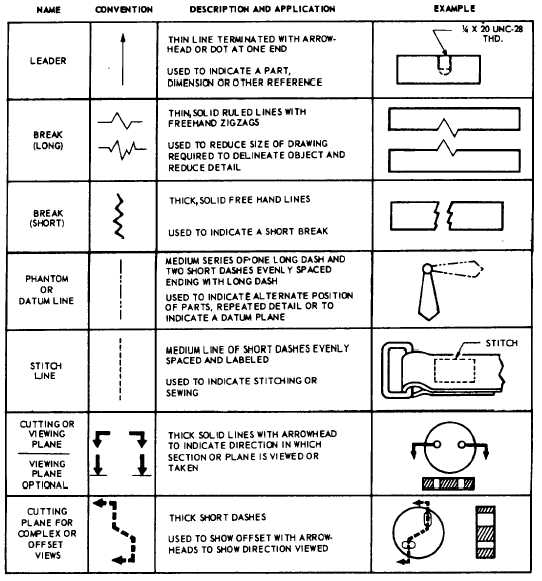142.46.2
Figure 3-23.-Use of line characteristics and conventions–Continued.
The widths of the various lines on a drawing
required for borderlines, outline of principal
are very important in interpreting the drawing.
DoD-STD-100C specifies that three widths of line
should be used: thin, medium, and thick. As a
general rule, on ink drawings, these three line
widths are proportioned 1:2:4, respectively.
However, the actual width of each type of line
should be governed by the size and the type of
drawing.
The width of lines in format features (that is,
title blocks and revision blocks) should be a
minimum of 0.015 in. (thin lines) and 0.030 in.
(thick lines). To provide contrasting divisions
between elements of the format, thick lines are
blocks, and main divisions of blocks, whereas thin
lines are required for minor divisions of title and
revision blocks and bill of materials. Use of
medium line width for letters and numbers is
recommended.
The width of lines drawn with a pencil
cannot be controlled as well as the width of lines
drawn with pen and ink. However, pencil lines
should be opaque and of uniform width through-
out their length. Cutting plane and viewing plane
lines should be the thickest lines on the drawing.
Lines used for outlines and other visible lines
3-20

